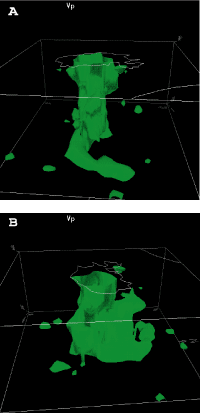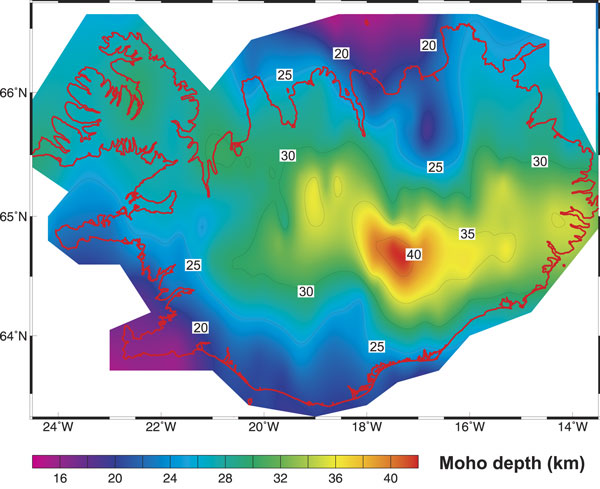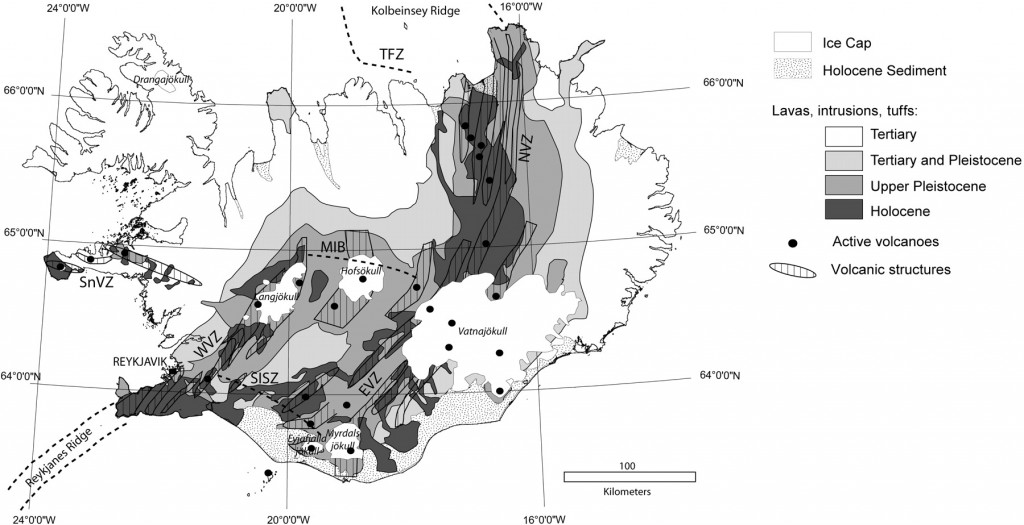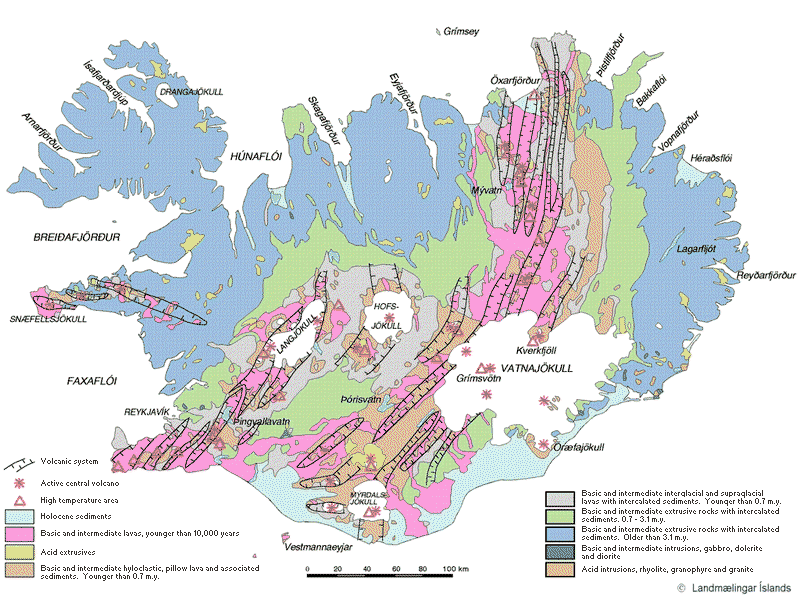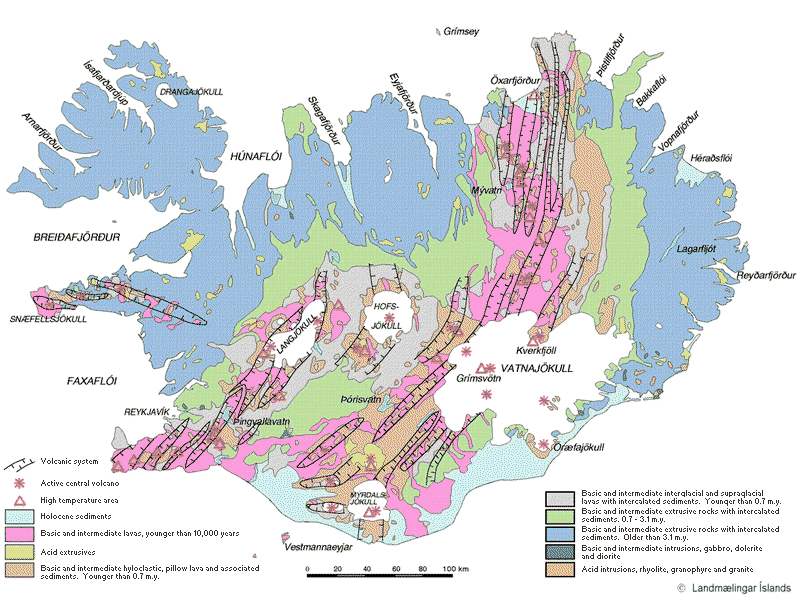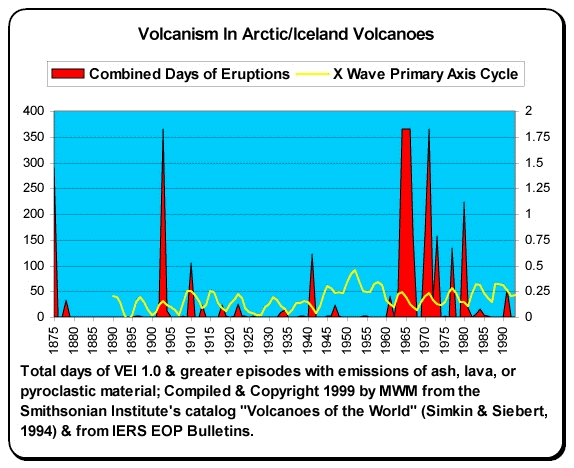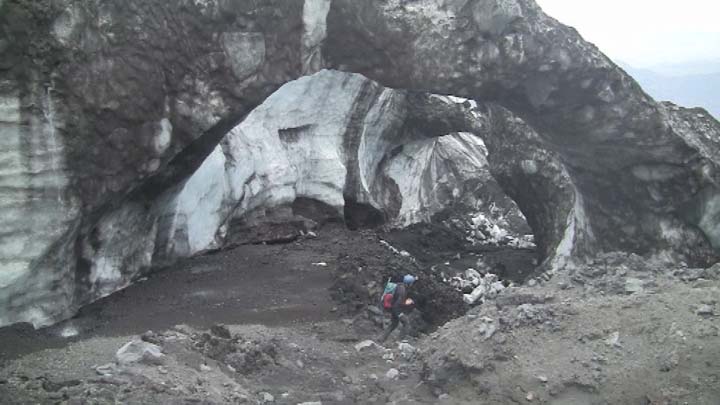According to the news on Rúv this evening it is now a opinion at Icelandic Met Office that a small eruption did take place in Katla volcano during the days 8 and 9 July 2011. This eruption was however larger then the eruption in Fimmvörðuháls in Eyjafjallajökull volcano last year (2010). But this is based on tremor data from around Katla volcano during this summer. But this is what Einar Kjartansson geologist at Iceland Met Office says in the news at Rúv this evening. Even if this small eruption did take place in Katla volcano it does not seems to have eased the pressure inside Katla volcano, so a large eruption in Katla volcano is still a possibility in the close future. Note: GVP has updated Katla volcano eruption status to the year 2011!
This conclusion was reached by checking out the cauldron that formed during this event. But they show a sign that they had a sudden melt taking place. But that melt can only happen of lava got into contact with the ice and fast melted it. This is also the reason why there was a 5 meters flood in Múlakvísl glacier river that did destroy the bride over it. But it is also a fact that the harmonic tremor in Katla volcano during this period was the same as that did happen during the eruption in Eyjafjallajökull volcano. The only difference was that it it was stronger from Katla volcano then in Eyjafjallajökull volcano it seems (at least from what I can see from the data). Even if it lasted for a shorter time then in Eyjafjallajökull volcano.
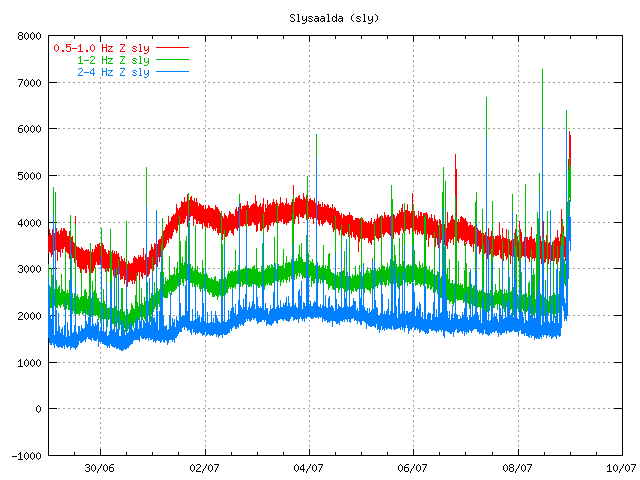
The tremor on Slysaalda SIL station on 9 July 2011 at 00:36 UTC. Copyright of this picture belongs to Iceland Met Office.
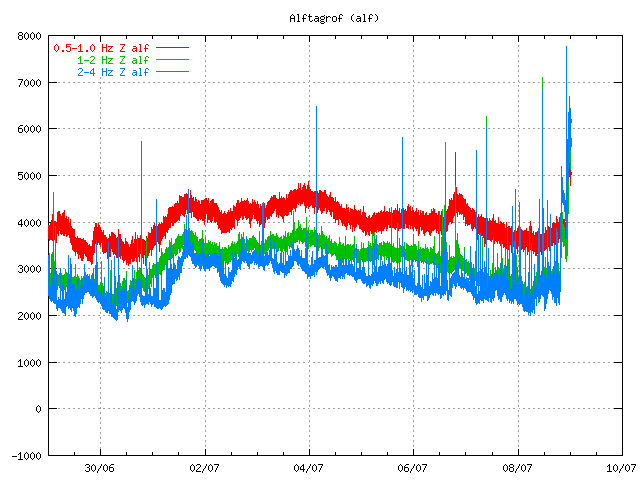
Alftagrof SIL station on 9 July 2011 at 00:36 UTC. Copyright of this picture belongs to Iceland Met Office.

The area that was active and had a eruption on 8 and 9 July 2011. Copyright of this picture belongs to Iceland Met Office.
Even with this small eruption it is clear that Katla volcano is not done with its eruptions. Since the large one is not yet over. When that happens is a good question and nobody has a answer too at the moment.
Note: This is also what did happen in Hamarinn volcano the week after. But I also think that volcano did have a minor eruption in July 2011. As the signatures are the same from what I can gather. So that makes three eruptions in Iceland for the year 2011 if confirmed later on.
Icelandic News with this. Use Google translate with care on it. Since it does not understand.
Allt bendir til Kötlugoss (Rúv.is, Icelandic, Picture)
Segir Kötlu hafa gosið í sumar (DV.is, Icelandic, Picture)
Lítið eldgos í Kötlu í sumar (mbl.is, Icelandic)


